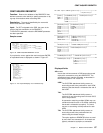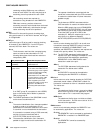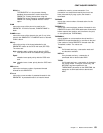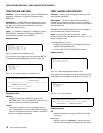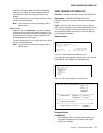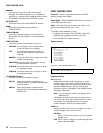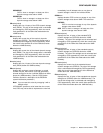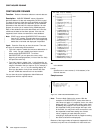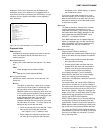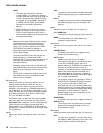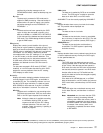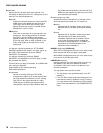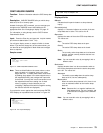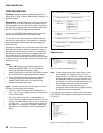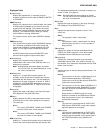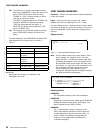
CEMT INQUIRE DSNAME
displayed. The full set of keywords can be displayed by
moving the cursor to the beginning of a displayed item (in
front of the Dsn field) and pressing the ENTER key. You get
a display of all the keyword information for the displayed
item, as follows:
IN DSN
RESULT - OVERTYPE TO MODIFY
Dsname(CICSTS13.CICS.CICSH###.DFHCSD)
Accessmethod(Vsam)
Action( )
Filecount(1)
Validity(Valid)
Object(Base)
Recovstatus(Notrecovable)
Backuptype(Static)
Frlog()
Availability( Available )
Lostlocks()
Retlocks(Noretained)
Uowaction( )
Basedsname(CICSTS13.CICS.CICSH###.DFHCSD)
Quiescestate( Unquiesced )
Fwdrecovlsn()
Figure 66. The expanded display of an individual entry
Displayed fields
DSName(
value
)
indicates that this panel relates to an external data set
inquiry and displays the 44-character name of an
external data set.
Accessmethod(
value
)
displays the access method of the data set. The values
are:
VSam
Virtual storage access method (VSAM).
BDam
Basic direct access method (BDAM).
Action (
input only field
)
specifies the action to be taken on this data set. The
values are:
Remove
This option is used when a data set is no longer
required on the local system. It deletes the data
set name block for the named data set. The
REMOVE option can be used only when there are
no file control resource definition entries that refer
to the specified data set. If any file definitions refer
to the data set name when you enter SET
DSNAME REMOVE, you receive an error
message indicating that the use count of the data
set name block is not zero. To ensure that no file
definitions refer to the data set name:
Close all files that refer to the data set. These
files can be found using the command:
CEMT INQUIRE FILE(ᑍ) DSNAME(dsname)
Either remove the data set name from each
file entry (by over-typing the data set name
with blanks on the CEMT display), or discard
the file definition entirely.
If you have a base data set with one or more
alternate indexes, you are unable to remove the
data set name block for the base until you have
removed all references to the base data set and
all references to paths.
Recovered
The data set has been restored from a backup
version and forward recovery has run and
completed successfully. CICS normally updates
the backup-while-open (BWO) attributes for the
base cluster data set BASEDSNAME, using
MVS/DFP 3.2 Callable Services.
If the BWO attributes are not updated after the
restore of a backup copy of a data set that was
taken using BWO, CICS fails a subsequent file
open because the data set is marked as
down-level.
Resetlocks (
vsam only
)
Purges shunted UOW log records for
backout-failed and commit-failed UOWs that hold
locks on this data set, and releases the retained
locks:
Backout-failed UOWs are those that failed
during backout processing.
Commit-failed UOWs are those that have
updated RLS data sets, and have failed to
release locks during the second phase of
2-phase commit syncpoint processing.
If you specify this option, you are accepting
backout failure and some loss of data integrity
rather than retaining locks and delaying
transactions, and therefore it should be used only
as a last resort.
For backout-failed and commit-failed UOWs that
hold locks on the data set, all records relating to
this data set are removed from the system log and
all retained record locks held by this CICS for the
data set are released. Diagnostic messages are
written to the CSFL transient data queue for each
backout-failed log record that is removed as a
result of the RESETLOCKS operation.
RESETLOCKS applies only to shunted UOW log
records that are classed as backout-failed and
commit-failed. Therefore it cannot be issued for a
BDAM data set. Backout-failed and commit-failed
log records are not shunted for BDAM data sets.
You might use RESETLOCKS if backout-failed or
commit-failed log records are holding up lost locks
recovery for the data set, and there is no other
way of resolving them.
Chapter 11. Master terminal CEMT 75



